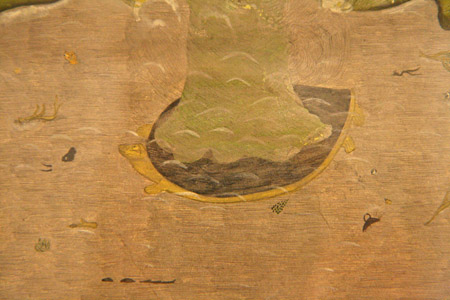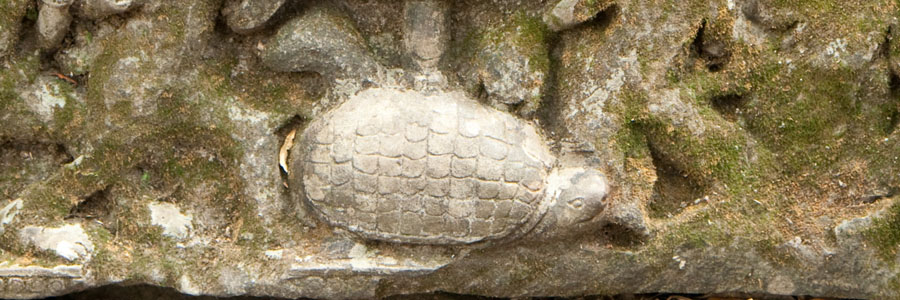“The fourth way differs from the other ways in that the principal demand made upon a man is the demand for understanding… The more a man understands what he is doing, the greater will be the results of his efforts.” – George Gurdjieff
A person centered in the Work lives in a perpetual tug of war. If he catches himself indulging in imagination, he cuts it short and attends to the reality of the present. If he sees in himself unnecessary haste, he cultivates intentional movement. If he observes lassitude, he improves posture. Judgment elicits compassion; resentment elicits acceptance; and so on.
Even so, these moment-to-moment efforts bear only as much fruit as the understanding upon which they are founded, because results in the work are proportionate to understanding, which brings us to the question of motive: Why dispel imagination? Why separate from resentment? Why drop judgment?
On what foundation have we based our efforts?
“The struggle between ‘yes’ and ‘no’ can easily take place on a wrong foundation. For instance, a fanatical belief in some or other idea, or the ‘fear of sin,’ can evoke a terribly intense struggle between ‘yes’ and ‘no,’ and a man may crystallize on these foundations. But this would be a wrong, incomplete crystallization. Such a man will not possess the possibility of further development.” – George Gurdjieff
 The internal struggle between ‘yes’ and ‘no’—of using work attitudes to counterbalance mechanical habits—can be undertaken for different reasons, and the same struggle, made for different reasons, will bear different results.
The internal struggle between ‘yes’ and ‘no’—of using work attitudes to counterbalance mechanical habits—can be undertaken for different reasons, and the same struggle, made for different reasons, will bear different results.
The Hindu myth of the Churning of the Milky Ocean (introduced in last month’s topic: Gurdjieff on Transformation Part 1) incorporates this principle. After Vishnu advises the gods and demons to churn the ocean to retrieve the nectar of immortality, their efforts begin without regard to foundation. Consequences soon follow :
“As they were churning, Mount Mandara sank of its weight, having no support…” – Srimad Bhagavatam
Efforts founded on nothing collapse into nothing. Hence, as gods and demons tug at the serpent, Mount Mandara sinks into the milky ocean, and with it, their hopes of any reward. Their initial efforts are wrongly founded.
 A common example of wrongly founded struggle is vanity: I slouch in my office chair. A flash of self-awareness reveals my ignoble posture to me. I swiftly sit erect and look around to see whether my manager has noted my inattentiveness. I have struggled between succumbing to laxity and controlling posture, but on what foundation? Am I conscious or acting conscious? I may deceive others, but I have certainly deceived myself.
A common example of wrongly founded struggle is vanity: I slouch in my office chair. A flash of self-awareness reveals my ignoble posture to me. I swiftly sit erect and look around to see whether my manager has noted my inattentiveness. I have struggled between succumbing to laxity and controlling posture, but on what foundation? Am I conscious or acting conscious? I may deceive others, but I have certainly deceived myself.
What, then, would be the right foundation for the struggle between ‘yes’ and ‘no’? The Hindu myth answers this question:
“When Vishnu saw how… the mountain sank, he incarnated in the wondrous body of a giant tortoise, entered the water, and lifted it up.” – Srimad Bhagavatam
To sustain the colossal Churning of the Milky Ocean, the god Vishnu incarnates himself as a tortoise and supports its foundation. He upholds Mount Mandara with his massive shell, enabling gods and demons to continue their pulling against each other till the ocean is sufficiently churned and the nectar is retrieved.
Among all the members of this myth (gods, demons, snake, ocean and mountain) Vishnu is the highest in rank. Taken as symbolical of our inner world, it is our highest part that must be placed at the foundation of our inner struggles. The churning between ‘yes’ and ‘no’ must be founded on our deepest understanding.
Taking their cue from the above, this month I invite my writers to give examples of struggling on wrong and right foundations.
“This system is based on understanding… The more you understand, the better the result of your work will be.” – Peter Ouspensky
